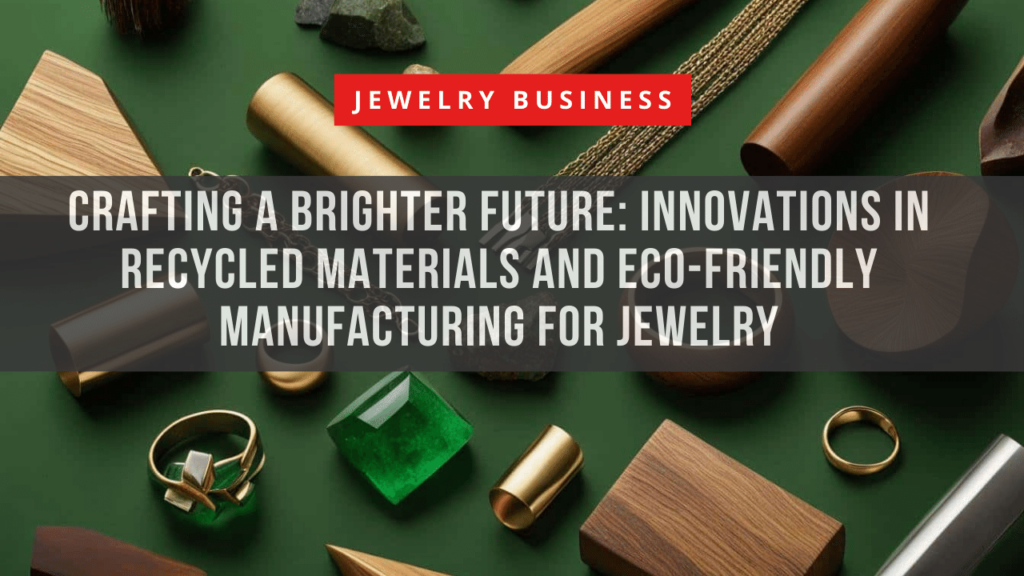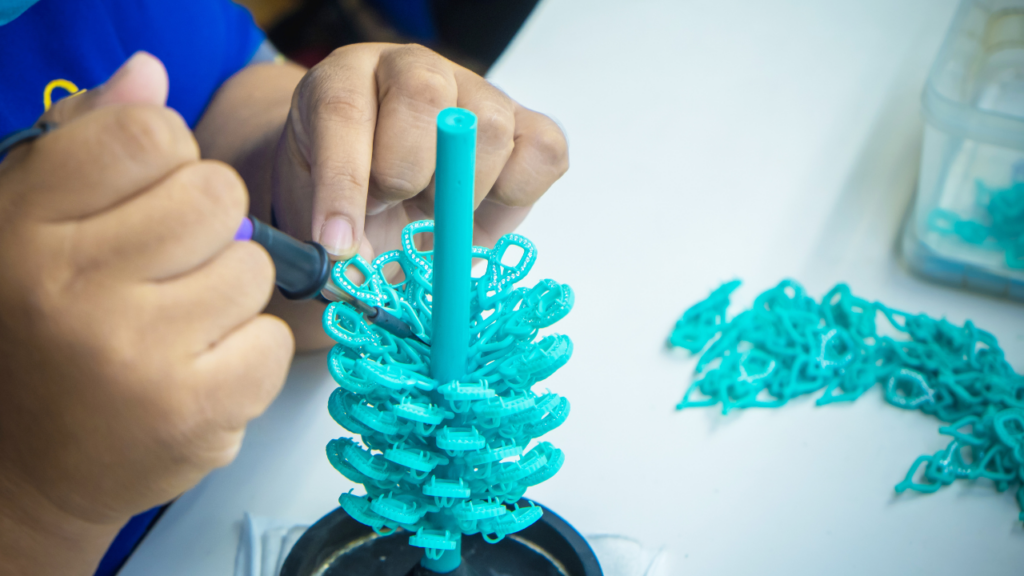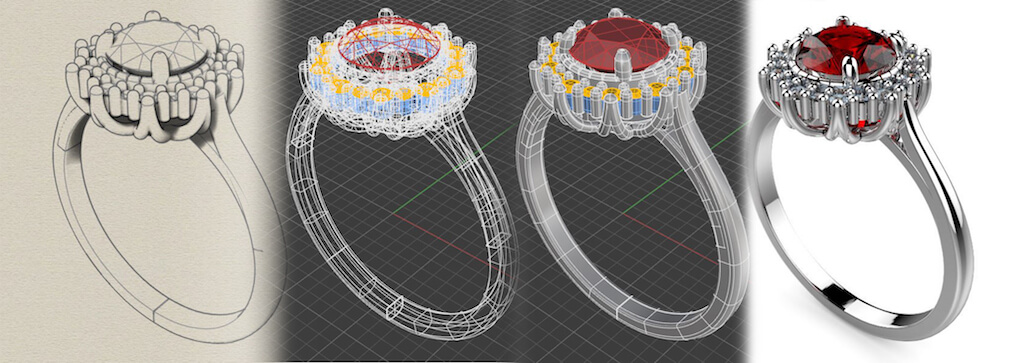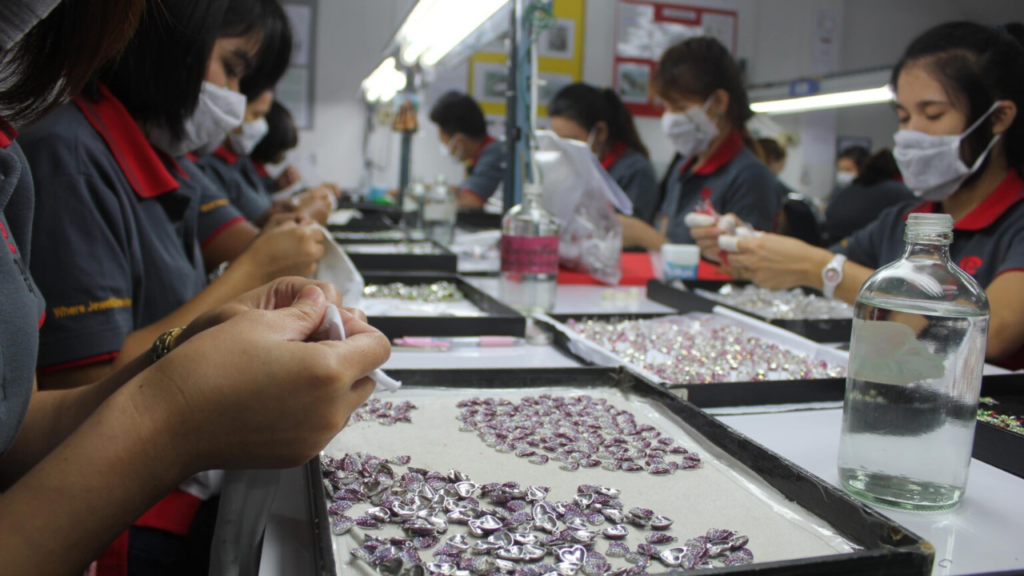
For centuries, jewelry has adorned our bodies and symbolized precious moments. But the beauty of traditional jewelry often comes at a hidden cost. Mining and processing the raw materials used in jewelry can have a significant impact on the environment, from habitat destruction and resource depletion to pollution from harsh chemicals.
Thankfully, a new wave of innovation is changing the landscape of the jewelry industry. The concept of sustainable jewelry is gaining traction, prioritizing eco-friendly practices and recycled materials. This shift towards sustainability is not just a trend, it’s a necessity. By embracing these innovations, we can ensure a brighter future for both the environment and the art of jewelry making.
This article will explore how advancements in recycled materials and eco-friendly manufacturing are shaping the future of jewelry. We’ll delve into the environmental concerns surrounding traditional methods, and then showcase how sustainable practices are revolutionizing the industry.
Innovations in Recycled Materials and Eco-Friendly Manufacturing for Jewelry
The Problem: Environmental Impact of Traditional Jewelry
While the sparkle of a gemstone or the weight of a gold chain might seem glamorous, the journey those materials take to become jewelry can be far from glamorous for the environment. Let’s explore three key areas where traditional jewelry production creates significant problems:
A. Mining and Sourcing Raw Materials: The extraction of precious metals and gemstones often involves large-scale mining operations. These mines can cause significant environmental damage, including deforestation, soil erosion, and water contamination. The mining process can also displace indigenous communities and raise ethical concerns about labor practices.
B. Chemical Use in Processing and Finishing: Once extracted, raw materials undergo various processes to become the finished jewelry pieces we see. These processes often involve harsh chemicals like cyanide and mercury, which can pollute air and water sources. Workers in jewelry manufacturing facilities can also be exposed to these harmful chemicals, putting their health at risk.
C. Waste Generation and Disposal: Traditional jewelry production generates a significant amount of waste. This can include leftover materials from mining and refining, as well as chemical byproducts from processing. Much of this waste ends up in landfills, contributing to microplastic pollution and taking hundreds of years to decompose.
The Solution: Innovations in Sustainable Jewelry

The growing concern for our planet has spurred exciting innovations in the jewelry industry. These advancements are paving the way for a more sustainable future, where beautiful jewelry can coexist with environmental responsibility. Let’s explore two key areas where innovation is making a difference:
A. Recycled Materials in Jewelry Making:
The concept of “new” is being redefined in the world of jewelry. Instead of relying on freshly mined resources, sustainable brands are turning to recycled materials. These can include:
- Recycled Metals: Gold, silver, and platinum can all be effectively recycled from old jewelry, electronics, and industrial waste. This reduces the need for environmentally destructive mining and conserves precious natural resources.
- Recycled Gemstones: Many gemstones can be polished and recut from vintage jewelry or leftover pieces, minimizing waste and giving pre-loved stones a new lease on life.
- Recycled Plastics: Innovative designers are even incorporating recycled plastics into unique and stylish jewelry pieces. This not only reduces plastic pollution but also transforms waste into wearable art.
The benefits of using recycled materials are numerous. First and foremost, it significantly reduces the environmental footprint of jewelry production. Less mining means less habitat destruction, water pollution, and energy consumption. Additionally, by reusing existing materials, we conserve precious natural resources for future generations.
B. Eco-Friendly Manufacturing Practices:

Sustainable jewelry goes beyond just the materials used. Forward-thinking manufacturers are adopting eco-friendly practices throughout the production process. Here are some examples:
- Renewable Energy Sources: Companies are increasingly using solar power or wind energy to run their facilities, reducing reliance on fossil fuels and lowering their carbon footprint.
- Water Conservation Techniques: Water-intensive processes like metal finishing are being re-evaluated. Techniques that minimize water usage or incorporate water recycling methods are becoming more commonplace.
- Reduced Chemical Use: Sustainable manufacturers are finding innovative ways to achieve the same results with less harmful chemicals. This protects both the environment and the health of workers.
The benefits of these eco-friendly practices are clear. By using renewable energy and minimizing waste, sustainable manufacturers achieve a lower carbon footprint. This responsible approach ensures a healthier planet for everyone.
The Future of Sustainable Jewelry: A Brighter Horizon

The innovations we’ve explored are just the beginning. The future of sustainable jewelry holds immense promise, with exciting advancements on the horizon for both recycled materials and manufacturing processes.
A. Advancements in Recycled Materials:
Bio-based Materials: Research is ongoing into the development of bio-based materials specifically for jewelry making. These materials could be derived from sustainable sources like bamboo or recycled organic materials, offering a truly eco-friendly alternative.
Lab-Grown Gemstones: The technology behind lab-grown gemstones is constantly evolving, allowing for the creation of a wider variety of ethically sourced and sustainable gemstones with even more dazzling properties.
B. Manufacturing with Technology:
Technology will play a crucial role in shaping the future of sustainable jewelry production. Here are some potential areas of impact:

3D Printing: 3D printing technology has the potential to revolutionize jewelry design and manufacturing. It can minimize waste by creating pieces layer-by-layer, using only the necessary materials. Additionally, 3D printing can allow for on-demand production, reducing excess inventory and its environmental impact.
Blockchain Technology: As seen with some of the leading sustainable brands today, blockchain technology can ensure complete transparency in the jewelry supply chain. This allows consumers to track the origin of materials and verify ethical and sustainable practices throughout the production process.
By embracing these advancements and leveraging the power of technology, the jewelry industry can move towards a future where exquisite design and environmental responsibility go hand in hand.
JEWELRY IS TRANSFORMING BEAUTIFULLY

The world of jewelry is undergoing a beautiful transformation. By embracing recycled materials, eco-friendly manufacturing practices, and innovative technology, sustainable jewelry is not just a trend, it’s the future. Sustainable jewelry allows us to adorn ourselves with pieces that are not only beautiful but also kind to the planet.
Every purchase we make has the power to create change. By choosing sustainable jewelry brands, we can support businesses that are committed to responsible sourcing and minimizing their environmental footprint. This collective effort can significantly reduce the environmental impact of the jewelry industry and ensure a brighter future for our planet.
For those seeking exquisite craftsmanship and a commitment to quality, Royi Sal Jewelry offers a glimpse into the future of sustainable jewelry. They specialize in working with clients to create unique pieces using recycled metals and ethically sourced materials.
With a little research, you can discover a world of beautiful, sustainable jewelry pieces that will make you look and feel good, all while making a positive impact on the environment. So ditch the guilt and embrace the future of sustainable jewelry!
Share this post

